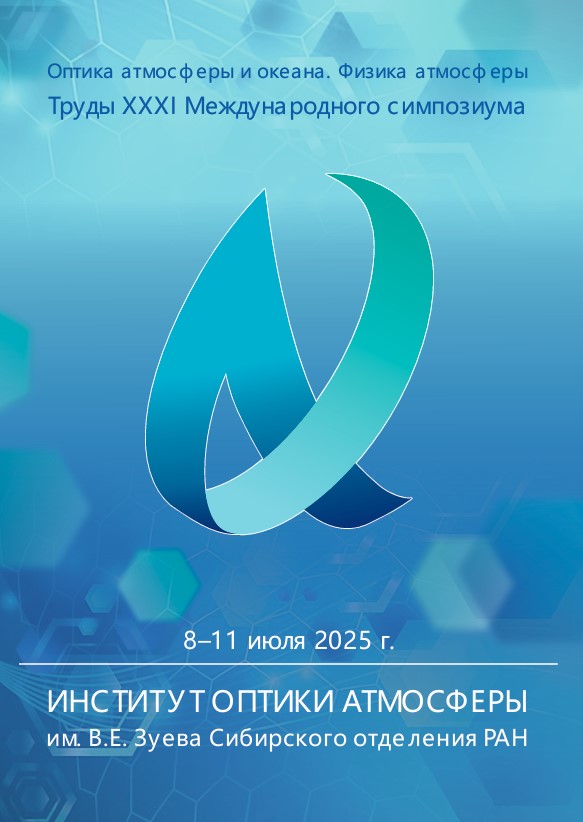UDC 53.043
CSCSTI 29.31
Russian Classification of Professions by Education 05.06.01
Russian Library and Bibliographic Classification 268
Russian Trade and Bibliographic Classification 636
BISAC SCI053000 Physics / Optics & Light
In this report, we study the maximal SO2 concentrations and total SO2 columns at four Arctic sites: Eureka, Canada; Ny-Ålesund, Norway; Thule, Greenland; and Resolute, Canada. For this, we use the data on the minimal temperature, maximal negative deviations of ozone concentration from multiyear average, and maximal sulfur dioxide concentration in the Arctic stratosphere, as well as the total ozone and sulfur dioxide columns, calculated from the respective altitude profiles. The temperature and ozone mixing ratio profiles are obtained from the Aura MLS observations for 2005-2022; and the sulfur dioxide mixing ratio profiles are calculated from Aura MLS observations for 2010/11, 2019/20, 2020/21, and 2021/22. The results of this report can be useful for studying of how SO2 affects the polar stratospheric cloud formation and O3 destruction in the winter-spring stratosphere of the Arctic.
ozone, sudden stratospheric warming, polar night, sulfur dioxide, temperature, Aura MLS observations, mixing ratio profiles
1. Smyshlyaev S.P., Galin V.Ya., Shaariybuu G., Mocakov M.A. Modelirovanie izmenchivosti gazovyh i aerozol'nyh sostavlyayuschih v stratosfere polyarnyh rayonov // FAO. 2010. T. 46. № 3, S. 291-306.
2. SPARC: Assessment of Stratospheric Aerosol Properties (ASAP), SPARC Report No. 4, WCRP-124, WMO/TD-No. 1295, February 2006, edited by: Thomason L. and Peter T., 2006.
3. Zhao Z., Wang W., Wang Y., Sheng L., Zhou Y., Teng S. Reasons for low fraction of Arctic stratospheric cloud in 2014/2015 winter // J. Geophys. Res.: Atmospheres 2023, V. 128, e2023JD039549. https://doi.org/10.1029/2023JD039549.
4. Sheng J.-X., Weisenstein D.K., Luo B.-P., Rozanov E., Stenke A., Anet J., Bingemer H., Peter T. Global atmospheric sulfur budget under volcanically quiescent conditions: Aerosol-chemistry-climate model predictions and validation // J. Geophys. Res.: Atmos. 2015, V. 120, P. 256–276, doihttps://doi.org/10.1002/2014JD021985.
5. Münch S., Curtius J. Nucleation modeling of the Antarctic stratospheric CN layer and derivation of sulfuric acid profiles // Atmos. Chem. Phys. 2017, V. 17, P. 7581–7591, https://doi.org/10.5194/acp-17-7581-2017.
6. Zhao Z., Wang W., Wang Y., Sheng L., Zhou Y., Teng S. Reasons for low fraction of Arctic stratospheric cloud in 2014/2015 winter // J. Geophys. Res.: Atmospheres 2023, V. 128, e2023JD039549, https://doi.org/10.1029/2023JD039549.
7. Kremser S., Thomason L.W., von Hobe M., Hermann M., Deshler T., Timmreck C., Toohey M., Stenke A., Schwarz J.P., Weigel R., Fueglistaler S., Prata F.J., Vernier J.-P., Schlager H., Barnes J.E., Antuña-Marrero J.-K., Fairlie D., Palm M., Mahieu E., Notholt J., Rex M., Bingen C., Vanhellemont F., Bourassa A., Plane J.M., Klocke D., Carn S.A., Clarisse L., Trickl T., Neely R., James A.D., Rieger L., Wilson J.C., Meland B., Stratospheric aerosol—Observations, processes, and impact on climate // Rev. Geophys. 2016, V. 54, P. 278–335, doihttps://doi.org/10.1002/2015RG000511.
8. Zhao J., Toon O.B., Turco R.P. Origin of condensation nuclei in the springtime polar stratosphere // J. Geophys. Res. 1995, V. 100, P. 5215–5227, doihttps://doi.org/10.1029/94JD03110.
9. Pitts M.C., Poole L.R., Gonzalez R. Polar stratospheric cloud climatology based on CALIPSO spaceborne lidar measurements from 2006 to 2017 // Atmos. Chem. Phys. 2018, V. 18, P. 10881–10913, https://doi.org/10.5194/acp-18-10881-2018.
10. Ageyeva V.Yu., Gruzdev A.N., Elokhov A.S., Mokhov I.I., Zueva N.E. Sudden stratospheric warmings: Statistical characteristics and influence on NO2 and O3 total contents // Izvestiya, Atmospheric and Oceanic Physics, 2017, V. 53, N 5, P. 477–486.
11. Bazhenov O.E., Nevzorov A.A., Nevzorov A.V., Dolgiy S.I., Makeev A.P. Vozmuschenie stratosfery nad Tomskom zimoy 2017/2018 gg. po dannym lidarnyh i sputnikovyh (Aura MLS/OMI) nablyudeniy // Optika atmosfery i okeana. 2020. T. 33. № 07. S. 509–515. DOI:https://doi.org/10.15372/AOO20200702.





